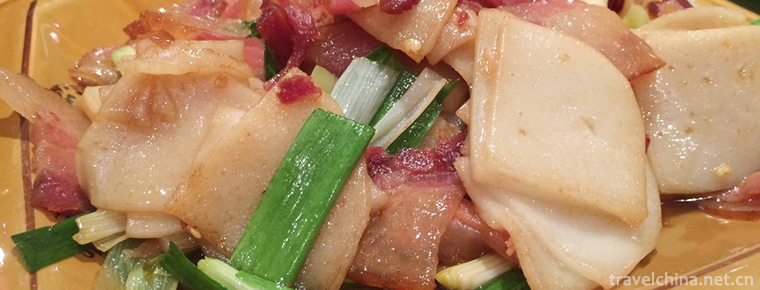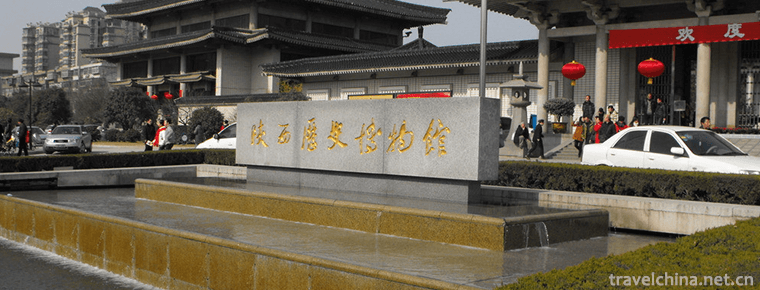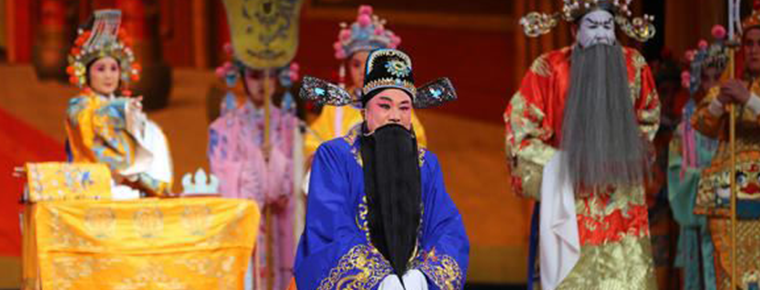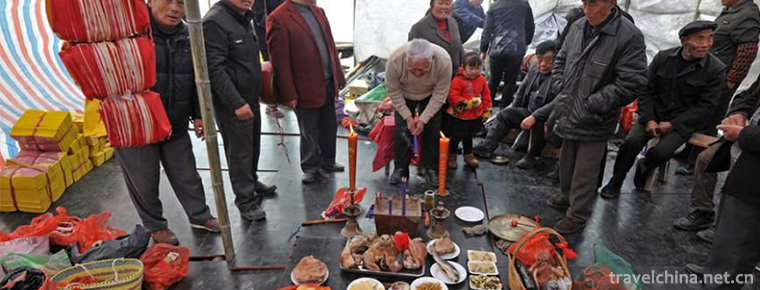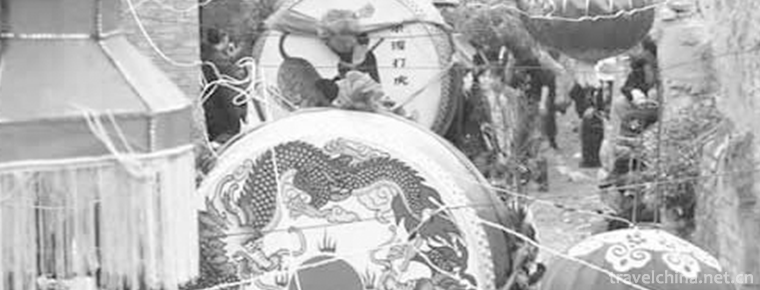Luochuans drums
Luochuans drums
Luochuan Yigu, a traditional dance in Luochuan County, Shaanxi Province, is one of the national intangible cultural heritage.
Luochuan drum is mainly spread in Huangzhang, Yongxiang and Jiuxian counties of Luochuan County, Shaanxi Province. It is one of the three drums in Yan'an (chest drum, waist drum and crappy drum). Shaanxi dialect calls it crappy drum, which is characterized by jumping, so it is called crappy drum. The biggest characteristic of Luochuan drum wrestling is to complete various dancing movements in jumping. During the performance, the drummer carries a flat drum about 50 cm in diameter in front of his belly, beating drums and jumping at the same time.
On May 20, 2006, Luochuan Yigu was approved by the State Council of the People's Republic of China to be included in the first batch of national intangible cultural heritage list, the heritage number: III-14.
historical origin
Luochuan drum in Shaanxi Province is a treasure in the treasure house of Chinese national culture. It is rooted in the Loess Plateau of northern Shaanxi. Luochuan County borders Huangling and belongs to the hometown of Xuanyuan Huangdi, the ancestor of the Chinese nation. According to the records of Luochuan County, Luochuan belonged to Yongzhi City in Yugong and Xihe State in Shang Dynasty. More than 1000 B.C. belongs to the Zhou people's active area. In the struggle of exploiting nature, defending beasts and fighting against foreign offenders, the ancestors invented drums (earth drums) in the Neolithic Age.
In the Spring and Autumn Period, drums have developed into more than 20 kinds, such as Jiangu, Gaogu, Leigu, Linggu, Road Drum, Shengu, Tugu, etc. Drums have been widely used in all aspects of society for their special pronunciation functions and sound effects. They are not only used for Royal noble etiquette, sacrifice, entertainment and time reporting, but also for inspiring morale in the army. Legend has it that drums and firewood were installed in the beacon towers of the ancient Wei Great Wall. When attacked by the enemy or in case of an emergency military situation, drums were fired and alarmed to dispatch troops. Drum is an indispensable instrument in the ancient army. It has gone through thousands of years. In Luochuan Rugu Township such as Huangzhang and Jiuxian Town, there are ruins of the Great Wall of Wei and beacon towers, so it seems that Rugu first sprouted in the army during the Spring and Autumn Period and the Warring States Period. The drum-shaped structure of contemporary tomb drums is very similar to the remains of the tomb drums found in the pits of Qin Dynasty. The tomb drums are of a partial circular shape with a cavity diameter of 68 wind meters about 2 feet, and their surface diameters are similar to those of the drums used in the contemporary Luochuan tomb drums.
In the Western Han Dynasty, the "advocating" music rose and was used by the emperor. It was called "imperial door advocating" and later developed to play on horseback. It was called "riding and blowing" as a military music honor guard. So the origin of the drum is also influenced by the "riding advocacy". The traditional drum performance is like a galloping horse, and its stride performance is like a riding posture. Located in the north of China, Luochuan is probably the place where "riding and blowing" was born earlier. Some people think that in 189, Huns came from the south of Luochuan and came from such musical instruments as "eggplant", "horn" and "condyle drum", which were interpreted as "riding drum" according to Shuowen. Corollary: Luochuan drum was formed by the influence of "paigu". But it was hundreds of years later than the advocacy of the Western Han Dynasty. Of course, this inference can not be ruled out and needs further research.
From the development history of musical instruments, the three kinds of percussion instruments used in contemporary drums are bound to be gradually improved. Before the Spring and Autumn Period and the Warring States Period
The "drum" of "long group voice" rose in the Western Han Dynasty, and there were "short-sighted and stilted songs" (according to records: cymbals were introduced from Tianzhu in the Han Dynasty) before the "drum" could be added after the introduction of cymbals. Gong came into being in Wei Dynasty. Then the drums and cymbals in the drums now need to be perfected for hundreds of years to achieve what they are today.
In Tang Dynasty, "advocating excellent acrobatics never ceased before, advocating loud voices urgently heard outside". "Drum music and inspiration" has been quite popular among the people.
Encouragement in Song Dynasty was more developed, more famous as "surprise encouragement" and "long encouragement". The "surprise drum" in the Song Dynasty is similar to the "bad drum" in form, system and performance: the size is similar, both chest and waist, mainly to show the life of the army and people. Bad drums and various forms of folk social fires have become a comprehensive square art. With the help of folk festivals, celebrations, social rituals and other folk activities, it has been passed down through the Ming and Qing dynasties to the contemporary era.
In the early 1980s, along with the in-depth census of Shaanxi Volume of the Integration of Chinese National and Folk Dances, Luochuan Rui Gu was first performed in Yan'an folk art performance, and was praised by the masses. It was also called one of the "Yan'an Three Drums" and won many prizes in national, provincial and municipal literary and art competitions. It has also become the main body of compiling dance works such as Yan'an Wugu and Loess Heroic Wind. It has become the first national key program of intangible cultural heritage in Shaanxi Province. Every Spring Festival, many villages and towns in Luochuan County dance with drums to celebrate the great achievements and changes of the reform and opening up in building a new socialist countryside.
Dance features
Basic motion
When playing drums, gongs and cymbals, the basic movements are single jump, double jump, pacing, twisting and swinging, and so on. Double jump takes off and falls at the same time with both feet, leans back and moves roughly and forcefully. Single jump is steady and graceful, and its posture is flexible and free; "rubbing step" is just built and "twisting and swinging" is soft and beautiful. The field maps mainly include "dividing the mane of a white horse", "twisting the tail of a scorpion", "single-horse battle", "four-wall enclosure", "character combination" and so on. Performers make various shapes in dancing, jumping and jumping. They rush left and right in the sound of gongs and drums. They fight hard, such as battlefield, rough movements, bold and bold, full of strength.
Costume props
During the performance, under the leadership of two umbrellas with melon skin caps, blue cloth robes, blue cloth umbrellas in their left hand and a fly in their right hand, eight drummers, six cymbals and four gongs formed a team of drums, and some of them were composed of four drums, four cymbals and four gongs. The gongs are usually played by fourteen or fifteen-year-olds, who are all performing at the end of the team. Dancers wear heroic scarves, colorful clothes with opposite skirts, waist skirts, legs and flags on their backs. They are all dressed as military generals in traditional operas. Others follow the Yangko Team composed of young men and women, commonly known as "dressing up", to foil the mood and atmosphere of the drum performance.
Form of performance
There are two kinds of drum performances: field drum and street drum. Site drum, also known as "small field drum", is a form of performance with Yangko, lions, dry boats and other social fires in a comprehensive folk dance team. Every place, the first stage performance (similar to the northern Shaanxi Yangko "stepping on the big field"), after the end, umbrella head in the scene alternately singing New Year Yangko, the lyrics are mostly improvised greetings, wishes, congratulations and other lucky words, tunes are mostly "Siliu Songs" popular in the local. There are also traditional folk tunes such as "Twelve Heroes" and "Ten Embroideries" sung by umbrella head after singing the New Year Yangko, commonly known as "singing Yangko". When singing to the climax, the umbrella head is often led by one person, the crowd is quiet and the atmosphere is more active. After the long song is sung, all kinds of small programs are performed in turn. Finally, the drum team enters the stage to perform until the climax ends. Then it is performed by the trampoline drum alone, which is also called "Rugu Yangge" in the local area. During the performance, two umbrella heads led the drum team around the field and then stood at the edge of the field, led by two cymbals. Dance routines include drum-to-drum, cymbal-to-cymbal and gong-to-gong. Common formations include "Scorpion twisting tail", "white horse dividing mane", "cross-to-beat", "four in and four out". At the climax of the dance, the umbrella head waits for an opportunity to enter the arena, and leads the dance team out of the arena. The small drum show is over.
Crossing the street drum is the performance of marching. The dance team consists of two lines. The two umbrella heads lead the team forward. The dancers all dance "cross-line progress", and turn around and twist their waists continuously, while striking the drum and advancing. The basic formations are Yangko's "single crossing" and "double crossing".
Inheritance and protection
Inheritance value
Rugu is a popular folk square art among the people of Luochuan. It has a very important position in the local people's life, not only has great cultural and entertainment value, but also is an important etiquette tool. In addition, it also has a certain military role and a larger fitness function and the role of inspiring production.
Bad drum is one of the earliest dance forms in Shaanxi inspiration. It is a reflection of socialization in a specific historical period. It also depends on people's ideological beliefs, ethics, style and interest. Its rich content, basic characteristics and inheritance history are rare in other inspirations in China. At the same time, it will study history, politics, military, economy and culture. It has a certain driving effect.
Promoting, rescuing and protecting Luochuan drums will play an important role in the construction of spiritual civilization in Yan'an area and even in the whole country, enriching the cultural life of the people, improving the quality of the people, promoting overall development and building a harmonious socialist society.
Inheriting characters
Zhang Wanjiu, male, Han nationality, born in 1951 in Yan'an, Shaanxi Province. The second batch of national intangible cultural heritage projects, representative inheritors of Luochuan Yigu, was declared by Luochuan County, Shaanxi Province.
protective measures
Since 1982, the Luochuan County Government has instructed the cultural departments to take measures to protect key administrative villages, and to organize and improve them by means of census and training.
In 1988, the Huangzhang Township Government took the lead in setting up the Leigu Art Association with more than 600 members.
In 1996, Luochuan County was named the Town of Folk Art by the Ministry of Culture.
In 2004, the Luochuan county government held a meeting to arrange and deploy the protection of folk culture.
On December 16, 2014, the inauguration ceremony of the intangible cultural heritage of Luochuan County entering the campus and the launching ceremony of "Luochuan Drum Course" were held in Fengqi Middle School.
Main branches
Present school
The present school, represented by Xiantou Village of Huangzhang Township, emphasizes that dancers take off with both feet at the same time, lean back slightly in the process of double-rise and double-fall, highlighting the bouncing and dancers'frenzy, and their rough and powerful movements.
Luo Sheng school
The "Luosheng School" represented by Luosheng Village, Jiuxian Town, highlights single jump, emphasizes the integrity and unity of the performance, and the drumming is slow.
A temple faction
The "Ashi School" represented by Ashi Village, Yongxiang Township, highlights the twisting of feet and waist, and highlights the "twisting and swinging" action in a smart and steady manner. It is known as "Wengu", also known as "twisting drums".
social influence
Important performance
In 1994, during the celebration of the 45th Anniversary of the National Day, Luochuan's drum was displayed.
In 1999, Luochuan drum was displayed in Shaanxi Province's "Thousand Faces Gong and Drum Welcoming the Millennium" activity and the performance of CCTV's "Sound and Earthquake Big" literary and artistic evening party.
Honorary commendation
In 1985, Luochuan Yigu took part in the national folk square dance performance in Kunming, Yunnan Province, and won the gold medal.
In 1991, Luochuan Yigu took part in Shenyang National Excellent Yangko Competition and won the first prize.
In 1992, Luochuan Yigu participated in the first inspiration competition of Lanzhou Silk Road Art Festival and won the first prize.

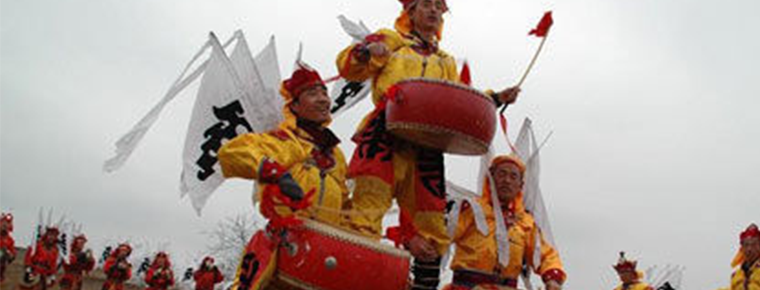
-
Fried the bait
Fried the bait/Great rescue is a famous traditional snack in Tengchong County, Yunnan Province..
Views: 236 Time 2018-11-27 -
Detian waterfall
Detian Waterfall is located in Detian Village, Shuolong Town, Daxin County, Chongzuo City, Guangxi Zhuang Autonomous Region. It is located in the upper reaches of Guichun River on the border between C.
Views: 150 Time 2018-12-12 -
Scenic Spots of the Three Gorges of the Yellow River
The Three Gorges Scenic Area of the Yellow River, the national AAAA-level tourist attraction, the home of Chinese dinosaurs, painted pottery, flowers and Nuo culture..
Views: 147 Time 2019-01-18 -
Scenic Spot of the Source of the Yellow River
Kariqu, one of the sources of the Yellow River, started with five springs, and Maqu, the other with only one springs. This is the source area of the Yellow River. Tourists here can't imagine that the .
Views: 174 Time 2019-01-18 -
Shaanxi History Museum
Shaanxi History Museum, China's first large-scale modern national museum, the first batch of China's "AAAA" class tourist attractions, known as the "ancient capital pearl,.
Views: 141 Time 2019-02-08 -
Huai Bang
Huai Bang (also known as Huai Diao, commonly known as Huai Qing Bangzi, Lao Huai Bang, Xiao Bang Opera and Xiao Ban Opera), is one of the traditional local operas in Henan Province and one of the nati.
Views: 92 Time 2019-05-04 -
Riddle
Riddles mainly refer to hidden words, such as allusions or words, which can be guessed by others. They can also be extended to things containing mysteries. Riddles originated from ancient Chinese folk.
Views: 294 Time 2019-06-04 -
Netboat Club
Netboat Club is an ancient traditional folk custom and folk religious and cultural activities. During the period of the Republic of China, around the Qingming Festival and the Mid-Autumn Festival, ten.
Views: 414 Time 2019-06-26 -
Yucun drum car
Yucun Drum Car has a history of more than 2,700 years. It has recovered after a long history of ups and downs. Drum truck is a combination of drum and car, which evolved from the ancient chariot. As a.
Views: 92 Time 2019-06-28 -
Beijing Union University
Beijing Union University was founded in 1985 by the Ministry of education. It is a comprehensive university in Beijing. Its predecessor was the 36 University branches in Beijing in 1978. After more th.
Views: 159 Time 2019-09-06 -
Liushi Manorial Museum
Dayi Liushi manoral museum is located at No.15, Jingui street, Anren Town, Dayi County, Chengdu City, Sichuan Province. It is one of the important historical sites and representative buildings in modern China..
Views: 186 Time 2020-11-05 -
Neijiang population
By the end of 2019, the total population of Neijiang's household registration was 4 million 81 thousand and 800, a decrease of 35 thousand and 900 from the end of last year, of which 2 million 103 thousand and 400 were male and 19 thousand were reduced.
Views: 346 Time 2020-12-16
